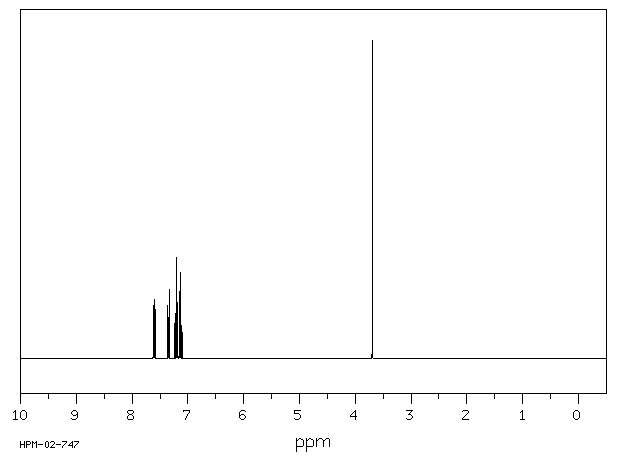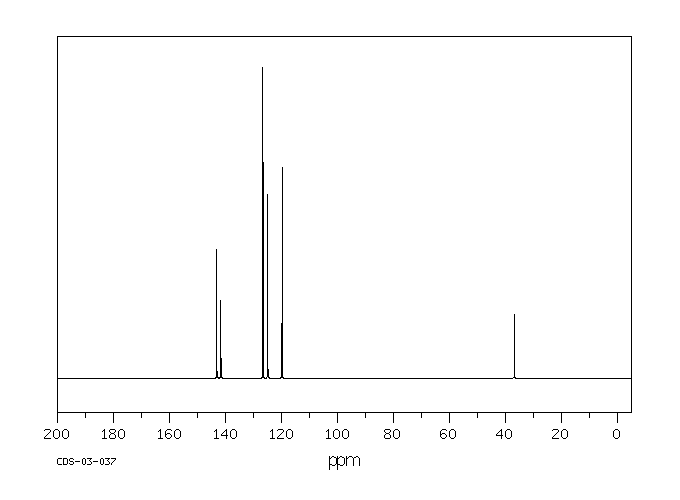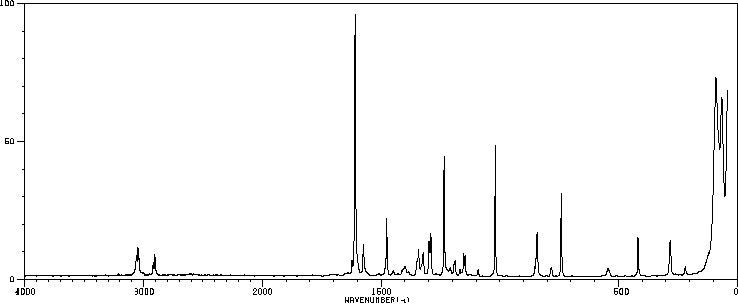| Name: | Fluorene 98% Material Safety Data Sheet |
| Synonym: | 9H-Fluorene; o-Biphenylenemethane; Diphenylenemethane; 2,2'-Methylenebiphenyl |
| CAS: | 86-73-7 |
Section 1 - Chemical Product MSDS Name:Fluorene 98% Material Safety Data Sheet
Synonym:9H-Fluorene; o-Biphenylenemethane; Diphenylenemethane; 2,2'-Methylenebiphenyl
Section 2 - COMPOSITION, INFORMATION ON INGREDIENTS | CAS# | Chemical Name | content | EINECS# |
| 86-73-7 | Fluorene | 98 | 201-695-5 |
Hazard Symbols: None Listed.
Risk Phrases: None Listed.
Section 3 - HAZARDS IDENTIFICATION EMERGENCY OVERVIEW
The toxicological properties of this material have not been fully investigated.
Potential Health Effects
Eye:
May cause eye irritation.
Skin:
May cause skin irritation. The toxicological properties of this material have not been fully investigated.
Ingestion:
May cause gastrointestinal irritation with nausea, vomiting and diarrhea. The toxicological properties of this substance have not been fully investigated.
Inhalation:
May cause respiratory tract irritation. The toxicological properties of this substance have not been fully investigated.
Chronic:
No information found.
Section 4 - FIRST AID MEASURES Eyes: Immediately flush eyes with plenty of water for at least 15 minutes, occasionally lifting the upper and lower eyelids. Get medical aid.
Skin:
Flush skin with plenty of water for at least 15 minutes while removing contaminated clothing and shoes. Get medical aid if irritation develops or persists. Wash clothing before reuse.
Ingestion:
Do not induce vomiting. If victim is conscious and alert, give 2-4 cupfuls of milk or water. Never give anything by mouth to an unconscious person. Get medical aid.
Inhalation:
Remove from exposure and move to fresh air immediately. If not breathing, give artificial respiration. If breathing is difficult, give oxygen. Get medical aid.
Notes to Physician:
Section 5 - FIRE FIGHTING MEASURES General Information:
As in any fire, wear a self-contained breathing apparatus in pressure-demand, MSHA/NIOSH (approved or equivalent), and full protective gear. During a fire, irritating and highly toxic gases may be generated by thermal decomposition or combustion. This material in sufficient quantity and reduced particle size is capable of creating a dust explosion.
Extinguishing Media:
In case of fire, use water, dry chemical, chemical foam, or alcohol-resistant foam. Use agent most appropriate to extinguish fire.
Section 6 - ACCIDENTAL RELEASE MEASURES General Information: Use proper personal protective equipment as indicated in Section 8.
Spills/Leaks:
Vacuum or sweep up material and place into a suitable disposal container. Reduce airborne dust and prevent scattering by moistening with water. Clean up spills immediately, observing precautions in the Protective Equipment section. Avoid generating dusty conditions.
Provide ventilation. Do not let this chemical enter the environment.
Section 7 - HANDLING and STORAGE Handling:
Wash thoroughly after handling. Wash hands before eating. Remove contaminated clothing and wash before reuse. Use with adequate ventilation. Minimize dust generation and accumulation. Avoid contact with eyes, skin, and clothing. Avoid breathing dust.
Storage:
Store in a cool, dry place. Keep container closed when not in use.
Section 8 - EXPOSURE CONTROLS, PERSONAL PROTECTION Engineering Controls:
Facilities storing or utilizing this material should be equipped with an eyewash facility and a safety shower. Use adequate ventilation to keep airborne concentrations low.
Exposure Limits CAS# 86-73-7: Personal Protective Equipment Eyes: Wear appropriate protective eyeglasses or chemical safety goggles as described by OSHA's eye and face protection regulations in 29 CFR 1910.133 or European Standard EN166.
Skin:
Wear appropriate protective gloves to prevent skin exposure.
Clothing:
Wear appropriate protective clothing to prevent skin exposure.
Respirators:
Follow the OSHA respirator regulations found in 29 CFR 1910.134 or European Standard EN 149. Use a NIOSH/MSHA or European Standard EN 149 approved respirator if exposure limits are exceeded or if irritation or other symptoms are experienced.
Section 9 - PHYSICAL AND CHEMICAL PROPERTIES Physical State: Flakes
Color: white
Odor: None reported.
pH: Not available.
Vapor Pressure: Not available.
Viscosity: Not available.
Boiling Point: 298 deg C
Freezing/Melting Point: 112-116 deg C
Autoignition Temperature: Not available.
Flash Point: 151 deg C ( 303.80 deg F)
Explosion Limits, lower: Not available.
Explosion Limits, upper: Not available.
Decomposition Temperature: Not available.
Solubility in water: Insoluble.
Specific Gravity/Density: 1.2
Molecular Formula: C13H10
Molecular Weight: 166.22
Section 10 - STABILITY AND REACTIVITY Chemical Stability:
Stable under normal temperatures and pressures.
Conditions to Avoid:
Dust generation, excess heat.
Incompatibilities with Other Materials:
Strong oxidizing agents.
Hazardous Decomposition Products:
Carbon monoxide, irritating and toxic fumes and gases, carbon dioxide.
Hazardous Polymerization: Has not been reported.
Section 11 - TOXICOLOGICAL INFORMATION RTECS#:
CAS# 86-73-7: LL5670000 LD50/LC50:
Not available.
Carcinogenicity:
Fluorene - Not listed by ACGIH, IARC, or NTP.
Other:
See actual entry in RTECS for complete information.
Section 12 - ECOLOGICAL INFORMATION Ecotoxicity:
Fish toxicity :LC50 (48hr) fathead minnow > 100mg/l (Finger, S.E. et al ASTM Spec. Tech. Publ. 865 1985); LC50 (24hr) bluegill sunfish, goldfish +/-5mg/l (Wood, E.M. The toxicity of 3400 chemicals to fish 1987); LC50 (unspecified exposure) himedaka killifish 3,3mg/l (Niiromi, J. et al Mie-ken Kankyo Kagaku Senta Kenkyu Hokuku 1989) Invertebrate toxicity : EC50 (48hr) Daphnia magna 0,43 mg/l (Finger, S.E. et al ASTM spec. Tech. Publ. 865 1985); LC50 (96hr) Neanthes arenacoedentata 1mg/l (Rossi, S. S. et al Mar. Pollut. Bull. 1978)
Section 13 - DISPOSAL CONSIDERATIONS Dispose of in a manner consistent with federal, state, and local regulations.
Section 14 - TRANSPORT INFORMATION IATA
Shipping Name: Not regulated.
Hazard Class:
UN Number:
Packing Group:
IMO
Shipping Name: Not regulated.
Hazard Class:
UN Number:
Packing Group:
RID/ADR
Shipping Name: Not regulated.
Hazard Class:
UN Number:
Packing group:
USA RQ: CAS# 86-73-7: 5000 lb final RQ; 2270 kg final RQ
Section 15 - REGULATORY INFORMATION European/International Regulations
European Labeling in Accordance with EC Directives
Hazard Symbols: Not available.
Risk Phrases:
Safety Phrases:
S 24/25 Avoid contact with skin and eyes.
WGK (Water Danger/Protection)
CAS# 86-73-7: No information available.
Canada
CAS# 86-73-7 is listed on Canada's DSL List.
CAS# 86-73-7 is not listed on Canada's Ingredient Disclosure List.
US FEDERAL
TSCA
CAS# 86-73-7 is listed on the TSCA inventory.
SECTION 16 - ADDITIONAL INFORMATION N/A











